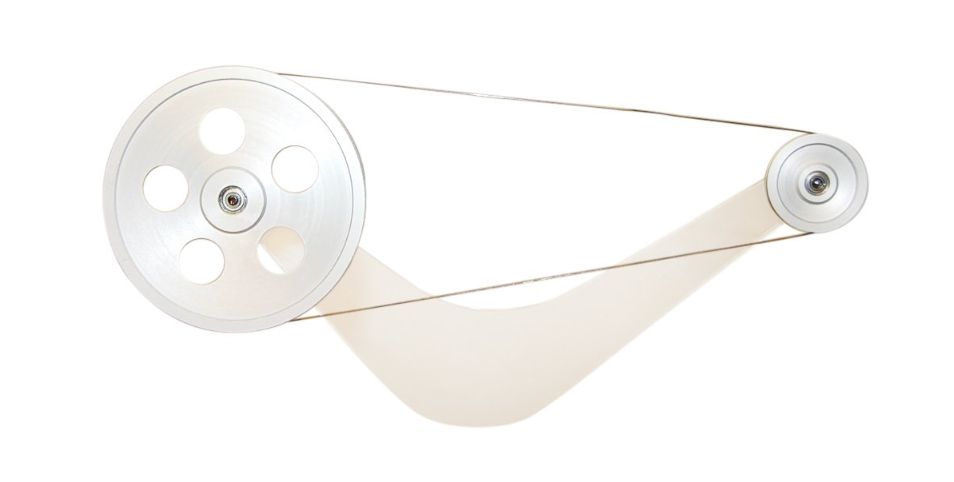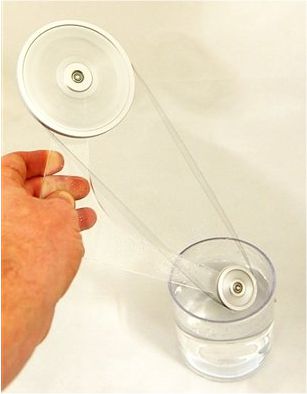The Memory Metal Heat Engine uses a loop of nitinol wire to generate power. The nitinol loop is place on two free rotating wheels, This device uses only hot water (hot side) and cool ambient air (cool side). The smaller brass wheel of the Memory Metal Heat Engine is immersed in a hot liquid.

In the Memory Metal Heat Engine the nitinol loop wire has been trained to remember a straight shape. When the loop travels into the hot water it is brought above its transition temperature and attempts to straighten out. Look at figure , at position 1 the nitinol wire is relatively straight and cool. As the wire moves from position 1 to 2, it is bent around the small brass wheel and enters the hot water. As the wire moves from position 2 to 3, the hot water brings the nitinol wire above its transition temperature and it tries to straighten out. When attempting to straighten out the nitinol wire takes a form depicted by the dotted lines. In doing so, the wire generates a tugging force, F, along the loop. As the wire segment moves from position 3 to 4 it straightens out. As the wire travels from position 4 to position 1, through the air and around the large wheel it has sufficient time to cool below its transition temperature and is ready for another cycle.

In short, the temperature differential causes one side of the loop to stiffen (hot water side) while on the air side of the loop the nitinol cools and relaxes. A mechanical force is produced that causes the wheel pulleys to rotate.

In some cases it is necessary to jump start the engine by rotating the larger wheel. Interestingly, the Memory Metal Heat Engine hasn’t a set rotational direction. Whichever way it is started it will continue to rotate. The Memory Metal Heat Engine can also be solar powered. A magnifying lens focusing sunlight on the brass wheel also supplies sufficient heat to power the engine.
Larger Memory Metal Heat Engine engines have been built and tested using nitinol loops. One engine built by Innovative Technologies International (ITI) in 1982, contained 30 nitinol wire loops. The nitinol wire used in the loops was 22 mils in diameter. The engine was tested using a hot water bath set at 55 C and an air temperature of 25 C. The engine reached a speed of 270 RPM and continued to operate for 1.5 years without failure. The nitinol wire had undergone 2.1×108 cycles without any breakage or observable degradation in performance.
